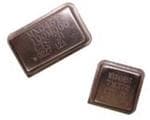Parkourguy
New Member
Hello, I'm new to circuit design with general beginner knowledge into circuitry, signaling and systems. I would like to try on a project on constructing a RF circuit to generate an output of 10MHz square wave frequency with a 5 volt output. Ive done a bit of research and would think that a Colpitts Circuit with a NPN transistor would be the best way to achieve this. I would like to know other peoples opinion on this and what points I should cover on this. Thank You



